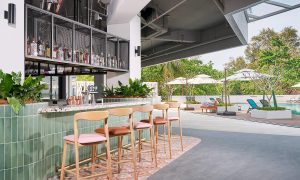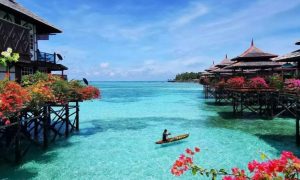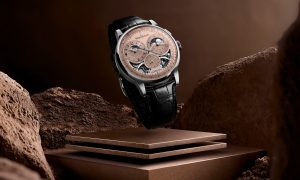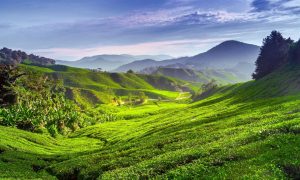THE EIGHTH MONTH OF THE YEAR IS SET TO HAVE A DISTINCTLY FESTIVE SPIN THIS YEAR AS EID AL.FITR AND NATIONAL DAY FALL WITHIN A FORTNIGHT OF ONE ANOTHER. SARAH REES LOOKS AT THESE DIFFERENT CELEBRATIONS THAT TRADITIONALLY STIR THE NATION INTO A JUBILANT MOOD.
Two of Malaysia’s key holidays fall in August this year, bringing both visitors and residents – no matter what their cultural background – together in marvelling at the festivities and getting caught up in the energy of these events. Both events hold long and interesting histories and while many people enjoy the national holidays and the work-free days that ensue, some people are unaware of the significance of these events and the intricacies of these festival days that both, in their own ways, form an integral part of the fabric of Malaysia.
 RAMADAN AND EID
RAMADAN AND EID
More than one billion Muslims worldwide will be going without food during the daylight hours as the ninth month of the Islamic calendar – or Ramadan – comes around again. The fasting month is a vital part of the practice of Islam, as fasting forms one of the five pillars (or duties) of the religion, and is one that should be observed by all Muslims over the age of 12, with only a few minor exceptions (e.g., pregnant women).
Fasting is so important because it reminds people of the plight of the poor, who spend a portion of their time hungry. It is also a chance to exert some will power by abstaining from the pleasures of food, drinks, and even cigarettes, and taking time to cleanse the body and focus the mind.
Muslims will abstain from food or drink during the hours between the sun appearing above the horizon and disappearing below it, which of course varies from country to country and even from state to state in Malaysia. The post-work, pre-sunset hours during this time often become a frenzy of shopping, and markets and stalls crop up all over the country and sell plentiful Malay food from all states of the country.
Even for non-Muslims, these markets are a must-visit purely for the fantastic food that can only be seen during this time. In places such as KL, stalls can be found selling dishes from as far away as Terengganu, as many local people decamp for the month to make some money during the fasting time. There are also certain foods associated with Ramadan, and these are easily identifiable because they can be seen in abundance. Dates are a traditional food for breaking fast, as they offer immediate energy and are believed to have been eaten by Muhammad during his time in the desert, while the little packs of ketupat (rice dumplings) are widely available and ideal for dunking in the portions of spicy beef rendang.
Restaurants all over the country will run special promotions and offer buffets for those seeking both traditional and non-traditional foods with which to break their fast (buka puasa), and as the moment of sundown nears, Muslims gather together, their food at the ready, to await the moment when their hunger can be satiated. After a prayer and a wash, the meal is begun, and so ends another day of abstinence.
It is important for non-Muslims to be considerate during this time, and remember that others are hungry and thirsty while you long for your lunch break or dash off to make a cup of tea during a slow afternoon at the office. It is also important to embrace the month and share in the importance of it, from eating the traditional foods to joining with Muslim friends as they enjoy the buka puasa.
The end of Ramadan is marked with Eid Al-Fitr, informally called hari raya in Malaysia, the most important celebration on the Islamic calendar and one that is marked in Malaysia with two days of national holidays (19-20 August). Non-Muslims rejoice in these days as being the quietest of the year, as the big cities empty of people heading back to their villages (balik kampung) to celebrate with their friends and families. Days are spent visiting loved ones and feasting on lots of goodies, giving thanks for the abundance of food, and celebrating the end of a key month.
 NATIONAL DAY
NATIONAL DAY
Hot on the heels of Eid this year is National Day, or Merdeka (Independence) Day, which celebrates the moment when Malaysia became an independent nation after years of colonial rule. The whole country enjoys a day off, and though many people spend it on their sofas, there are lots of events planned throughout the country, with the key fiesta taking place around Merdeka Square where history was made on 31 August 1957.
While Independence Day in many countries of the world often came at the end of a violent struggle, the handing over of the keys to the country was rather sedate here in Malaysia. The British colonials had been in power in Malaya (as it was then known) since 1874, with just a brief respite while the Japanese occupied the country during the Second World War (1941-1945). When the Brits returned after the war, it was only to begin the transition of power and continue fighting the guerrilla uprising known as the Emergency.
Once the threat from the communists during the Emergency began to ease off, the Malayan leader Tunku Abdul Rahman (the first Prime Minister of the country) led a team of delegates to London to discuss the details of taking over control of their country. The agreement was reached in February 1957 but, for logistical reasons, the official declaration of independence was only made at the end of August in a suitably formal but jubilant ceremony.
The crowds gathered at the Royal Selangor Club in Merdeka Square on the evening of 30 August, and Tunku Abdul Rahman arrived at two minutes to midnight to lead the crowd in observing two minutes of complete blackout. When the lights were switched on as 31 August arrived at the stroke of midnight, the British flag was lowered and the Malayan flag was raised amid chants of “merdeka”. It was, in the words of the first Prime Minister, “the greatest moment in the life of the Malayan people.”
Everyone was then permitted to get some sleep before the ceremony, which took place later that morning at the Merdeka Stadium in front of a crowd of 20,000. The Queen of England was represented by the Duke of Gloucester, and Tunku Abdul Rahman was handed the instrument of independence before he read the Proclamation of Independence to the cheering masses.
Six years later, another momentous celebration was held as Malaya became the Federation of Malaysia, bringing Sabah, Sarawak, and Singapore (which didn’t last) into the fold. The official ceremony was set to take place on the 31 August as before, but conflicts with Indonesia led to the event being postponed until 16 September, a day which has now become Malaysia Day.
This August, 55 years later after history was made, Merdeka Day will be marked with wonderful celebrations, and anyone living in proximity to the capital shouldn’t miss the parade and the magnificent fireworks displays which light up the sky throughout the night on the anniversary of Malaysia’s independence.
Ramadan runs from 19 July to 18 August, and Eid is celebrated on 19 and 20 August. Merdeka (or Independence) Day is on 31 August. For more information on celebratory events, visit www.tourism.gov.my.
This article was written by Sarah Rees for Senses of Malaysia.
Source: Senses of Malaysia July-August 2012
Click here for your free print subscription and free delivery of The Expat.


















